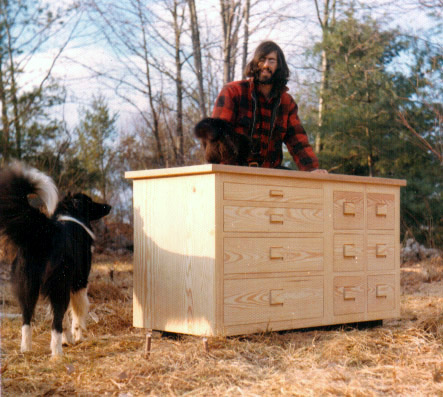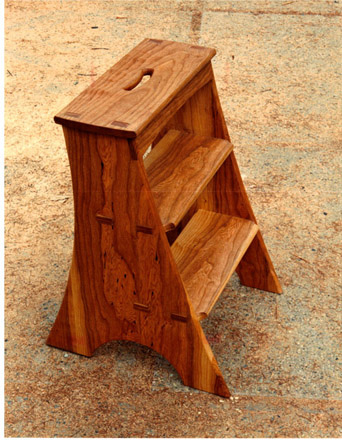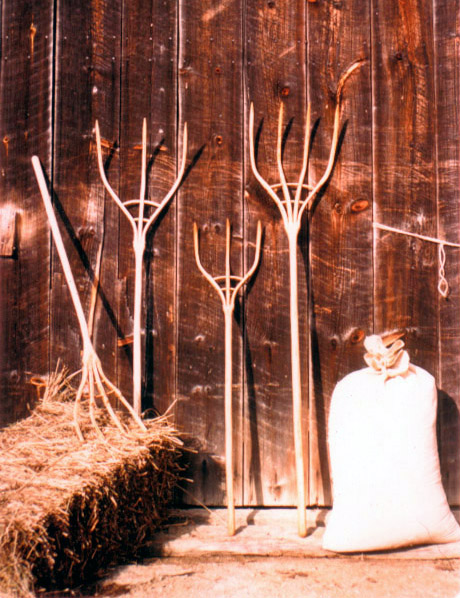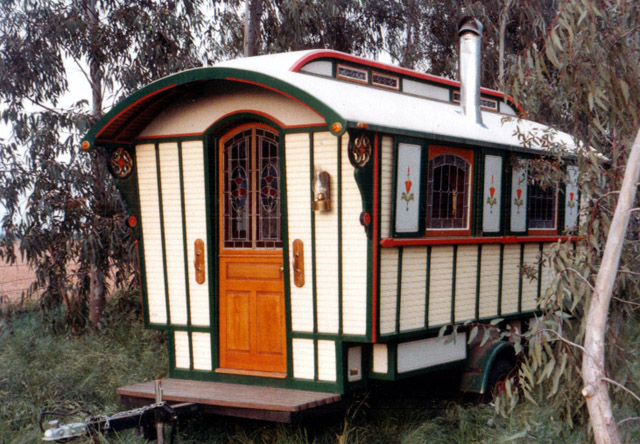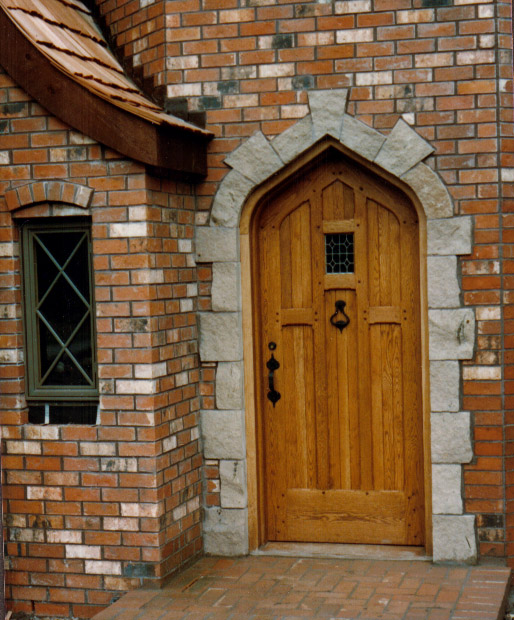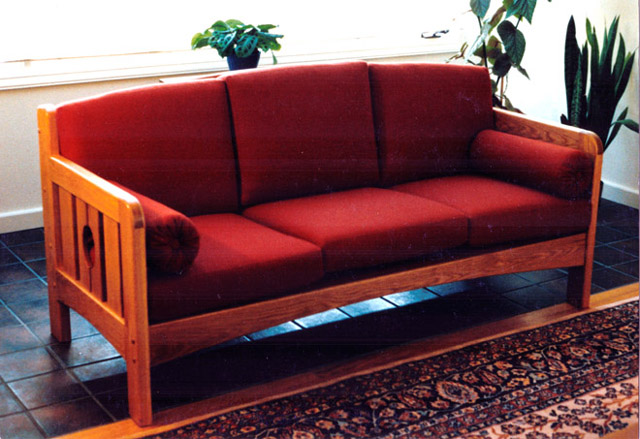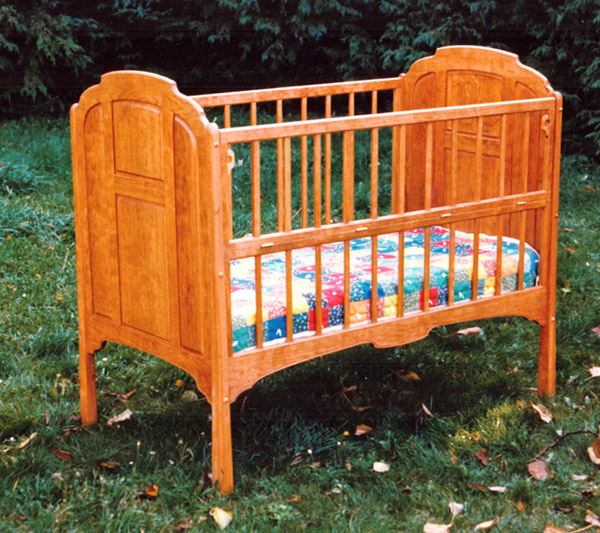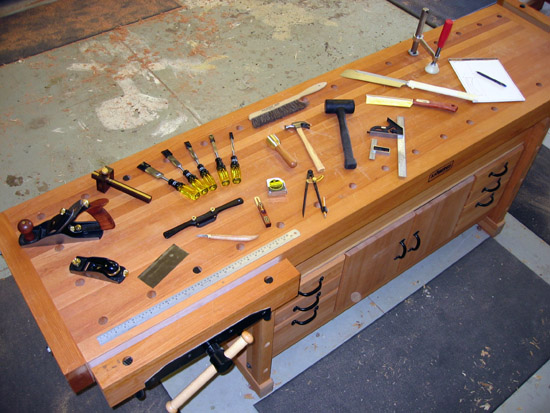
By any set of standards, Jim Tolpin is a maven of the woodworking world. Throughout a 40-year career, he has built everything from cabinets and furniture to elaborate gypsy wagons, and has written hundreds of articles and over a dozen books on subjects ranging from making money in the field of woodworking, to books about cottages and comfortable homes. His latest venture is a woodworking school nestled in the idyllic surroundings of Fort Worden State Park in Port Townsend, Washington. I sat down to talk with him recently to find out what he is up to and how he managed to become one of the guiding lights of the woodworking field. For him, it started early.
“When I was eight years old,” Jim recounted, “my grandfather, who did a lot of projects around the house, would take me on weekends to lumberyards, and let me help with various tasks. The first was letting me put the hardware on some cabinets he had built, an act that made me feel both proud and useful. That, in turn, inspired me to take shop in seventh grade. I got an A, and was very proud of that fact as well. I still recall my teacher complimenting me on my diligence and ability.
“After graduating from the University of Massachusetts with a degree in geology, I went into the Teacher Corps, designed to channel people into the teaching profession in inner cities. I taught for a year, then went to the University of New Hampshire in 1970, where I was supposed to be teaching. Actually, I mostly hung out in the woodshop. It was there that I started doing woodworking for a living, along with my roommate who was a [Rhode Island School of Design] graduate.
“About that time, I had the good fortune to meet an old-school boatbuilder. He was highly educated, a Dartmouth graduate in literature, and he told me that his father had wanted him to become an academic instead of a boatbuilder. Meeting him allowed me to pursue a woodworking career without feeling the guilt of not going into a •profession’ with a capital P, the sort of thing my parents felt I should do to justify my college education.
“The arts and crafts movement that was being reborn in the ’70s, and that took so many college educated people into woodworking, is in part because of people like us. We were interested in doing woodworking, but were also inclined, and experienced enough, to do the academic research needed to dredge up knowledge of the past and incorporate it into what we did. We were also willing to forego the economic rewards of the professional track.
“In 1972, I spent a year in Maine immersed in boatbuilding, then returned to New Hampshire and worked for a couple of years with a timber framer. During that time, I became interested in green wood butchery, going from tree to product using primitive hand tools, and making items like hay forks and other farm implements. Before long, I went back to finish carpentry, where there was money to be made, and started doing specialized cabinet making jobs as well.
“One day, a gypsy showed up at my shop and asked if I could build him a gypsy wagon on a Model T frame. That started me on a fascination with gypsy caravans, which I continued to build along with custom cabinet work. It’s a labor of love in that there’s no money in it, but I still do some for the joy of it. In 1978, I decided to get back into boatbuilding, and moved to Port Townsend, Washington, a port town at the head of Puget Sound that is a hub of wooden boatbuilding. After about six months in a boatyard, I realized there was more money in custom cabinet work, and reopened a cabinet shop. Over the years, I’ve done kitchen cabinets, built-ins and freestanding furniture.
“Around 1989, I started to write what was supposed to be an in house shop production manual for my employees in the cabinet shop. Once I got into it, I realized it could be a book appropriate for anyone who had an interest in making a living at custom cabinet work. I sent an outline to a publisher, who accepted it. I wrote the entire thing by hand on legal paper. It eventually sold about 45,000 copies. I then did a book on finish carpentry, and followed with books on general woodworking, tools, toolboxes, built-in furniture and a variety of cottage and family home design concept books. All in all, I’ve written about a dozen books so far. The best-selling one, which sold about 200,000 copies, is The New Cottage Home. My best-selling woodworking book was Building Traditional Kitchen Cabinets. All told, I’ve sold about three quarters of a million books.
“Last year, after a long career in actually making things of wood and writing about how I did it, I decided I wanted to work face-to-face showing people how to work wood, and to share my joy in doing it. Along with two others, I founded thePort Townsend School of Woodworking. Because there are three founders with widely ranging skills and interests, we offer a similarly broad range of courses from beginning hand tool work and historical woodworking skills on up to studio furniture and design.
“Personally, I want to show people how pleasurable hand tool woodworking can be when you work with good tools and proper technique. Good tools, good technique and good wood create the formula for experiencing the joy of woodworking. My awakening to the potential of hand tools came from visiting Williamsburg and seeing a shop that was quiet as a church, with no dust anywhere, and a group of people who looked like they were really enjoying themselves producing an incredibly refined highboy, and rapidly at that.
It’s no surprise that Jim has a lot of sage advice for his fellow woodworkers, but what may surprise many is his love of the simple. “Look at your goals when you do woodworking,” he advises. “It’s easy to get too oversold on doing things with machinery and forget just how well hand tools can do the same job with much more pleasure. Sometimes, the more power you apply to the process, the further you get from the product.
“A lot of people have been intimidated by hand tool woodworking and think it is mysterious and hard to do. What I have found is that with a little practice, you get very good at it and start to understand how they were able to build things very efficiently in the old days, working in a quiet, almost dust-free environment.
